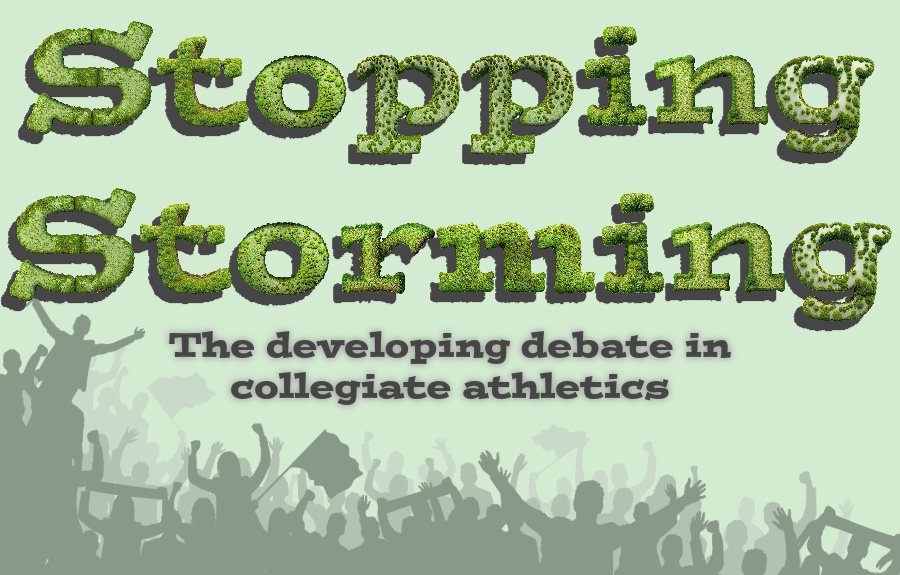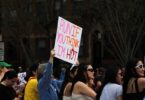
By Paige Albright
Boston University New Service
When the No.1 University of Iowa faced the No.2 University of Michigan on a cold fall night in 2016 at Kinnick Stadium, I remember vividly how electric the crowd was after the Hawkeyes scored a field goal to take the lead with less than a minute left in the game. Iowa, the home team, was chasing a perfect record heading into the match-up and had battled all night long, so, as the fans descended on the field after the final whistle, I remember jumping up to go celebrate with them.
To my dismay, I was promptly redirected to the exit by my father, who said “it’s too crazy down there, you’ll get trampled.” I was devastated and confused — how could what looked to be a party on the field be dangerous?
However, the dangers of “rushing the field” have become a major debate in college athletics as of late, especially in the world of NCAA basketball.
As NCAA basketball ramps up leading into March Madness, Wake Forest hosted Duke for a final Q1 matchup of their regular season. Duke, who has stayed at the top of the ACC rankings this season, was the heavy favorite, but they were toppled by the Deacon Demons.
However, this game gained notoriety not for the upset, but for the reaction of the Wake Forest home fans. After the final buzzer crowned the Deacon Demons as the victors, fans rushed to the court, notably colliding with Duke player Kyle Filipowski and causing an injury to his leg.
There have been many issues in recent years within college athletics where fans, staff or players are injured due to fans storming or rushing the playing field. However, most universities are not equipped with staff or venues that could hold back a rowdy crowd of college students.
An unofficial ESPN review concluded that there have been about 3 court rushes a week over the last three months of this college basketball season. Star players such as Zach Edey of Purdue or Caitlin Clark of the University of Iowa are being put at risk, battling through opposing teams’ fans to get to the safety of the locker room.
Currently, there are fines put in place by some of the 32 D1 basketball conferences, but Wake Forest was not fined as there is no storming penalty in the ACC. However, some see these fines as falling short of causing any change. As the SEC has fined LSU $100,000 for court storming twice this season, fines like this have not affected teams such as Arkansas, which has also received multiple fines; they have not seemed to stop fans.
However, many coaches and athletic directors like LSU’s Kim Mulkey have spoken out that a blockade of staff around the field could cause more harm than good. Especially since, in most cases, the staff will almost always be outnumbered by the fans. The Big South Conference commissioner Sherika Montgomery express concerns that a court storming ban would cause a downturn in attendance in-game, negatively affecting the student-athletes in turn. Court storming is often recorded by networks or schools themselves to reproduce for media later, becoming great tools for advertising future games.
At the professional level, rushing the field is not allowed, however. Beyond increased staff such as officers on horseback with tasers, there is the understanding that it is not acceptable to rush the field. This is not the case for college athletics. Rushing the court has been a part of the sports culture since the 1950s.
As NCAA and conference leaders will reconvene this summer for annual policy updates and discussion, many are curious to see if changes will be made to policy for rushing the playing field.




